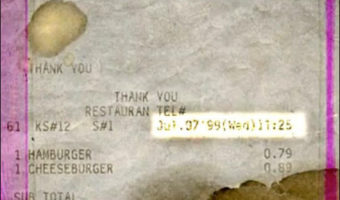How the Netherlands Was Transformed into a Cyclist’s Paradise
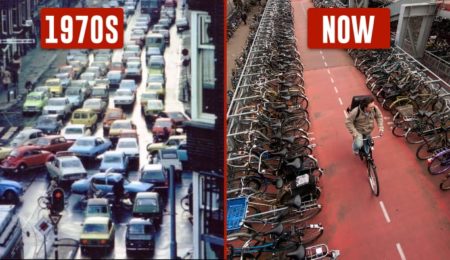
To the Dutch, cycling is nothing special or different. To them, it’s a part of everyday life like walking or taking a tram. Even the prime minister famously rides his bike to work. This is a normality that the rest of the world has only dreamt of. This Dutch cyclist utopia did not come easy. Over the past five decades, the government and the people have diligently created the infrastructure and the culture, overhauling their road networks, parking spaces, and traffic laws to enable this change.
Table of Contents
Gradual Large-Scale Switch to Cycling
Though in the 1920s and part of the 1930s, the Dutch predominantly used bikes, but after the two world wars, things changed drastically. Car ownership increased manyfold with a decrease in manufacturing costs, as was the case with the majority of developed nations. By the ’70s, there was at least one car per five inhabitants.
In the 1970s, Dutch cities like Amsterdam were full of traffic and air pollution.
Now they are models of sustainable urban planning.
Here's the story of how the Netherlands started building their cities for humans, not cars.
🧵 pic.twitter.com/52CdfBYlBH
— Michael Thomas (@curious_founder) March 8, 2023
This increased motorization came with a cost. In 1971, over 3,000 people were killed by motor vehicles, and 500 of them were children. One of these children was the daughter of journalist Vic Langenhoff who wrote the piece “Stop de Kindermoord” (“Stop the Child Murder”), sparking massive public protests against road accidents.
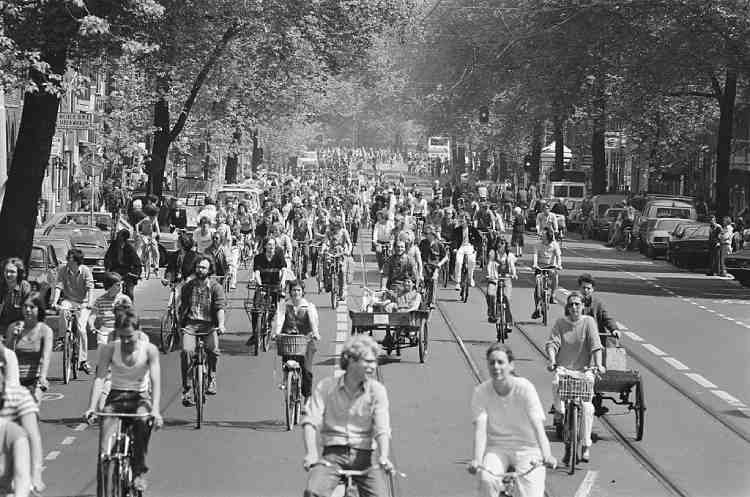
Maartje van Putten, who would later become an MEP, was the president of the protest and was instrumental in bringing about changes in transport policy to encourage cycling as a way of routine commuting. The resolve of Putten, community activists, and passionate cyclists led to public policy changes. First, there were mandatory car-free Sundays. Then there was an improvement in urban planning and laws to promote cycling by providing easily accessible infrastructure and road safety measures that prioritized cyclists.
The Netherlands Has 17 Million People and 23 Million Bikes
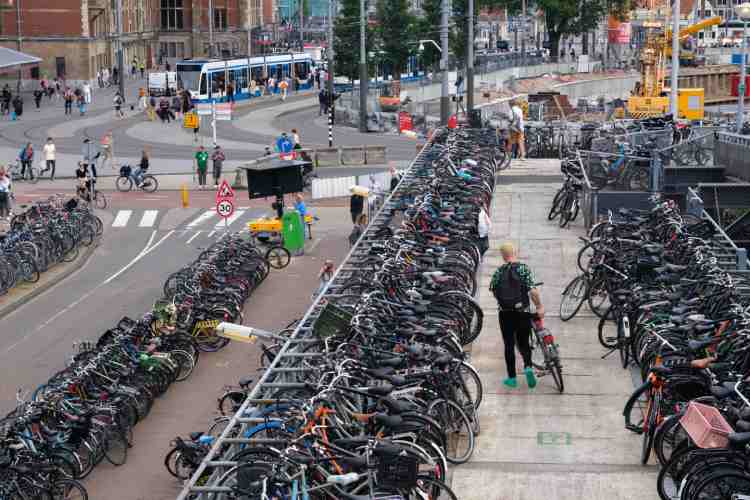
With over 36% of the population using bikes as their primary mode of transport, on average, Dutch cyclists cover as many kilometers as trains do. Only 45% use cars, and the remaining 11% use public transport. The use of bicycles is even higher in cities such as Groningen at 58%, Zwolle at 46%, and Amsterdam at 38%.
As with most European countries, the road network is comparatively cramped, making cycling a much easier way to get around than cars. Having relatively flat terrain throughout the country also makes cycling easy.
The World’s Most Comprehensive Cycling Infrastructure
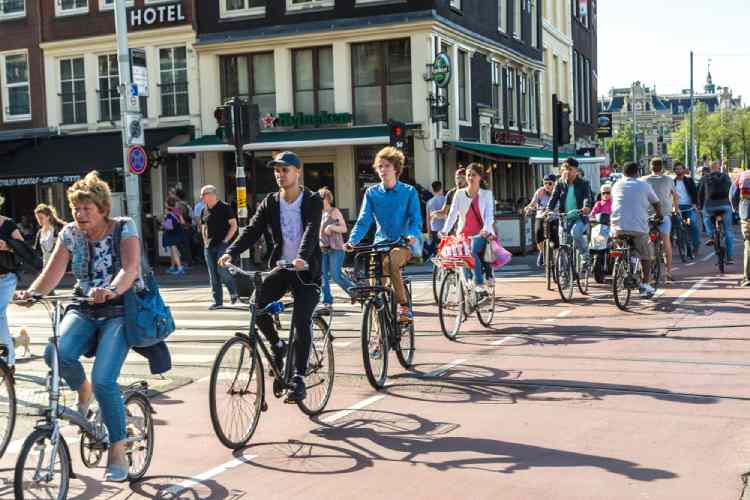
The Dutch transport network features a comprehensive cycling infrastructure. Of the total road network of 139,000 kilometers, the cycling track makes up a dedicated 35,000 kilometers. The tracks are usually made of red-dyed asphalt, are well-lit, and feature clear signposts. They are separated by either a dashed line to indicate cars can use the lane or a solid line to indicate only bikes are allowed.
While cycling tracks in many countries make life difficult for bikers at junctions and roundabouts, the Netherlands prioritizes bicycles over motorized vehicles. There are separate lanes for them and cyclist-specific traffic lights too.
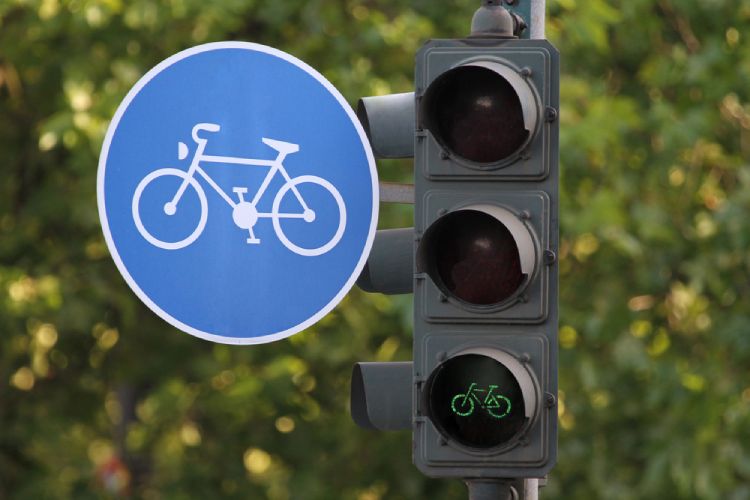
The Dutch often refer to cars as guests on the roads, and several traffic laws were passed to discourage using them. For example, in spaces where both cars and bikes travel, the speed limit for cars is 30 kph (19 mph), and there are speed bumps wherever necessary. An interesting consequence of this is that cyclists are not required to wear helmets since the government focuses on building safe streets. Roads with a speed limit of 50 kph (30 mph) have raised cycle tracks, and highways have separate parallel tracks.
Those traveling long distances can also take their bikes on trains, ferries, and even airplanes, though buses require the bikes to be foldable. Some cyclists modify their bikes to suit their needs. Parents often use “bakfiets” or “cargo bikes,” which were once used for carrying goods but now come equipped with seats for children and a canopy to protect them. Rental bikes, known as OV-Fiets, are also available.
Insanely Large Bicycle Parking Lots
The city of Utrecht boasts the world’s largest bicycle parking with three levels of underground spaces. Located near Utrecht Central Station, the garage can hold more than 12,599 bicycles. In 2022, the city of Amsterdam finished its four-year, $65 million project to encourage bike riding by building an underwater garage. Located at Amsterdam Central station, the new garage can house 7,000 bikes and will be expanded to hold 11,000 bikes. The garage features modern architecture and artwork and doubles as a tourist attraction.
Impact of Cycling on Residents
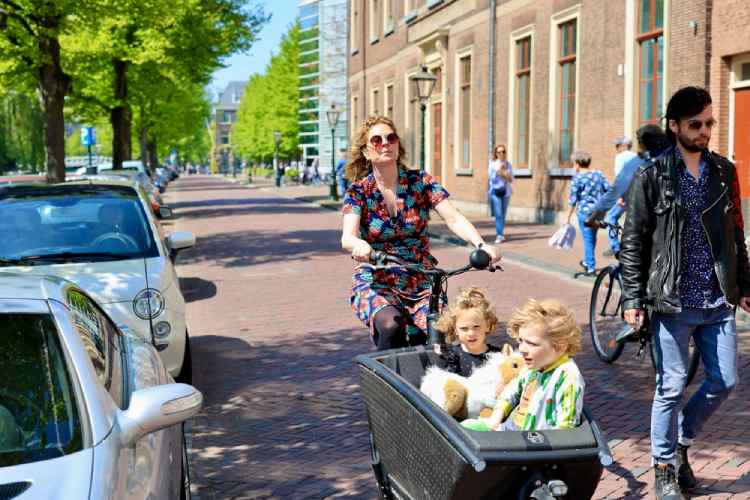
According to a 2015 study, every year, about 6,500 deaths are prevented because of the health benefits of cycling. Since regular physical activity decreases the risk of diseases due to a sedentary lifestyle like diabetes or high blood pressure, the life expectancy of the Dutch has gone up by six months. The decreased mortality also saves the country $20 billion annually in economic health benefits.
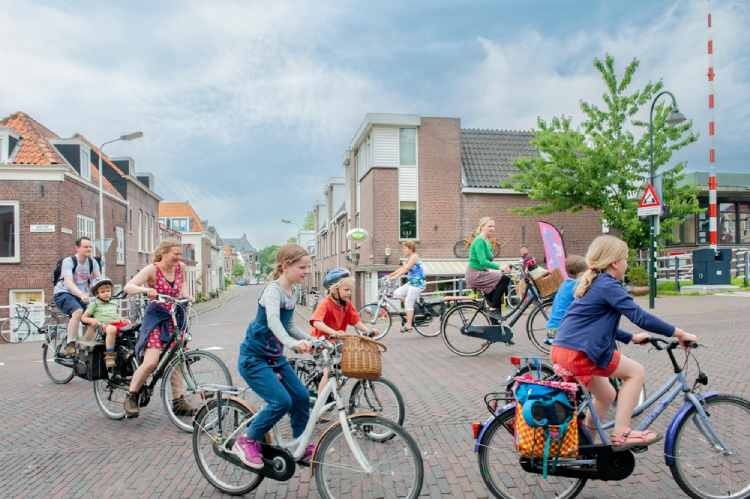
Another aspect is the freedom of movement the young get as they can ride unsupervised. Children ride to school on their own, as accidents are far less likely. Learning to ride starts as early as preschool. Though not required by law, most schools teach their students to ride a bike around fourth or fifth grade. Those who pass the traffic rules test and the practical test get a certificate saying they can now ride responsibly on their own.





















